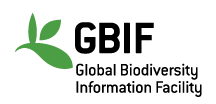
The zebra mussel is a small freshwater mussel. The species was originally native to the lakes of southern Russia and Ukraine, but has been accidentally introduced to numerous other areas and has become an invasive species in many countries worldwide. Since the 1980s, the species has invaded the Great Lakes, Hudson River, and Lake Travis.

The quagga mussel is a species of freshwater mussel, an aquatic bivalve mollusk in the family Dreissenidae. It has an average lifespan of 3 to 5 years.

Dreissena is a genus of small freshwater mussels in the family Dreissenidae in the class Bivalvia. They are found attached to firm substrates by threads from underneath the shells and are the only freshwater bivalves to attach to hard substrates in high densities while having a planktonic larval stage. They are considered the most aggressive freshwater invader in the world because of their ability to invade environments in every one of their life cycle.
The Dreissenidae are a family of small freshwater mussels, aquatic bivalve molluscs. They attach themselves to stones or to any other hard surface using a byssus. The shells of these bivalves are shaped somewhat like those of true mussels, and they also attach themselves to a hard substrate using a byssus, however this group is not at all closely related to true mussels, being more closely related to the venus clams (Veneridae).

The Global Biodiversity Information Facility (GBIF) is an international organisation that focuses on making scientific data on biodiversity available via the Internet using web services. The data are provided by many institutions from around the world; GBIF's information architecture makes these data accessible and searchable through a single portal. Data available through the GBIF portal are primarily distribution data on plants, animals, fungi, and microbes for the world, and scientific names data.

Zephyranthes carinata, commonly known as the rosepink zephyr lily or pink rain lily, is a perennial flowering plant native to Mexico, Colombia and Central America. It is also widely cultivated as an ornamental and naturalized in the West Indies, Peru, Argentina, Brazil, the southeastern United States from Texas to Florida, Zimbabwe, South Africa, China, Korea, the Ryukyu Islands, Assam, Nepal, Bhutan, Sri Lanka, Solomon Islands, Queensland, Society Islands, Kiribati, and Caroline Islands.

Alia carinata, common name the carinate dove shell, is a species of very small sea snail, a marine gastropod mollusc in the family Columbellidae, the dove snails.

Alia is a genus of small sea snails, marine gastropod mollusks in the family Columbellidae, the dove snails.
Arctocorisa is a genus of true bugs belonging to the family Corixidae.

Anomocora is a genus of cnidarians belonging to the family Caryophylliidae.
Paracalyptrophora is a genus of corals belonging to the family Primnoidae.
Columnella is a genus of bryozoans belonging to the family Farciminariidae.
Taprobanelmis carinata, is a species of riffle beetle found in Sri Lanka.
Serruria altiscapa, the stately spiderhead, is a flower-bearing shrub that belongs to the genus Serruria and forms part of the fynbos. The plant is native to the Western Cape and occurs at Blokkop in Villiersdorp as far as the Hottentots-Holland Mountains.
Cyclotropis is a genus of gastropods belonging to the family Assimineidae.
Dreissena caspia is a species of bivalves belonging to the family Dreissenidae.
Caspiohydrobia is a genus of gastropods belonging to the family Hydrobiidae.
Bankia carinata is a species of bivalves belonging to the family Teredinidae.

Figularia is a genus of bryozoans belonging to the family Cribrilinidae.








